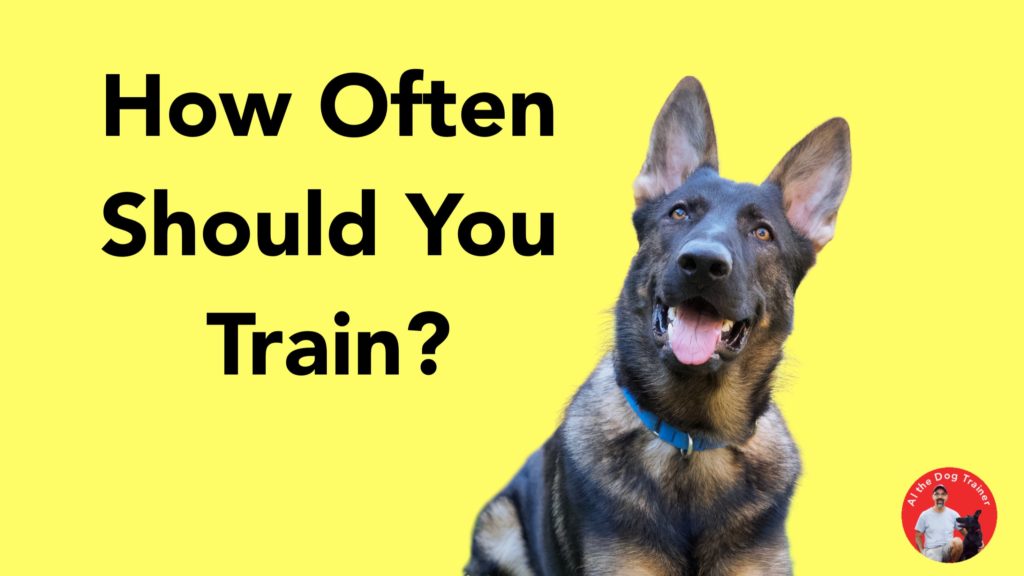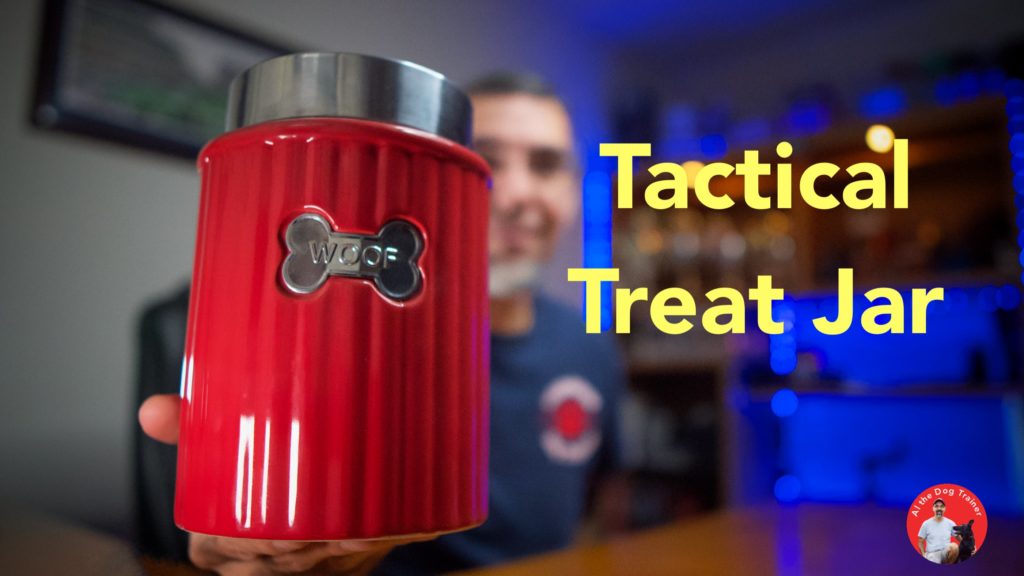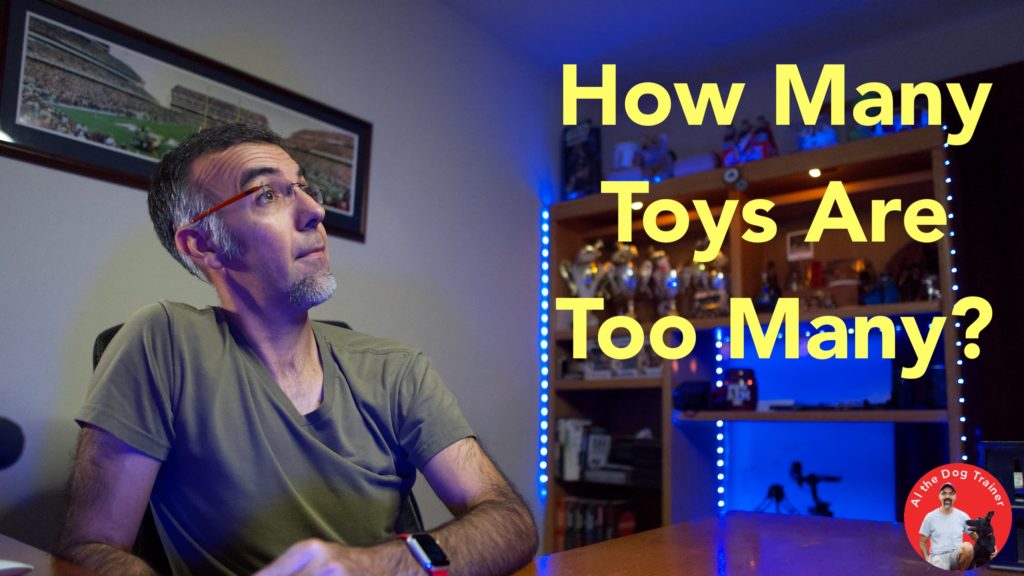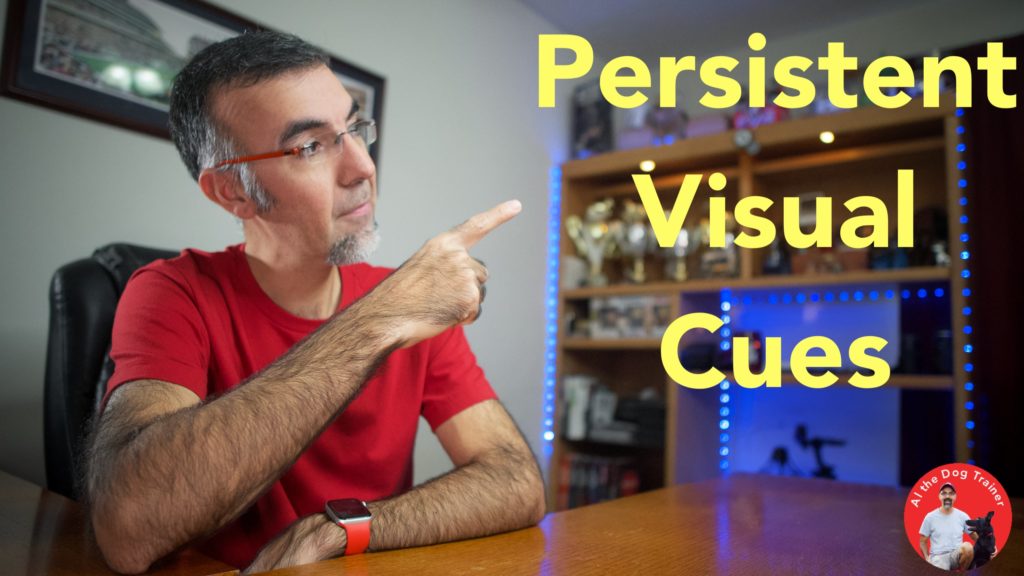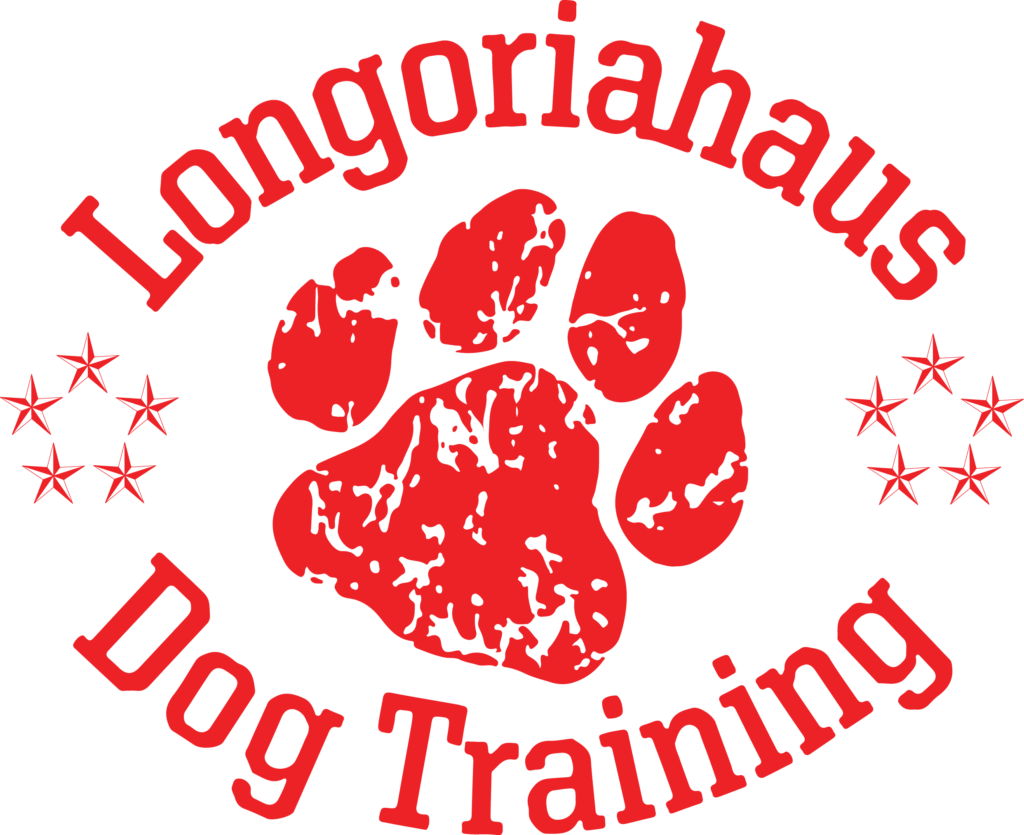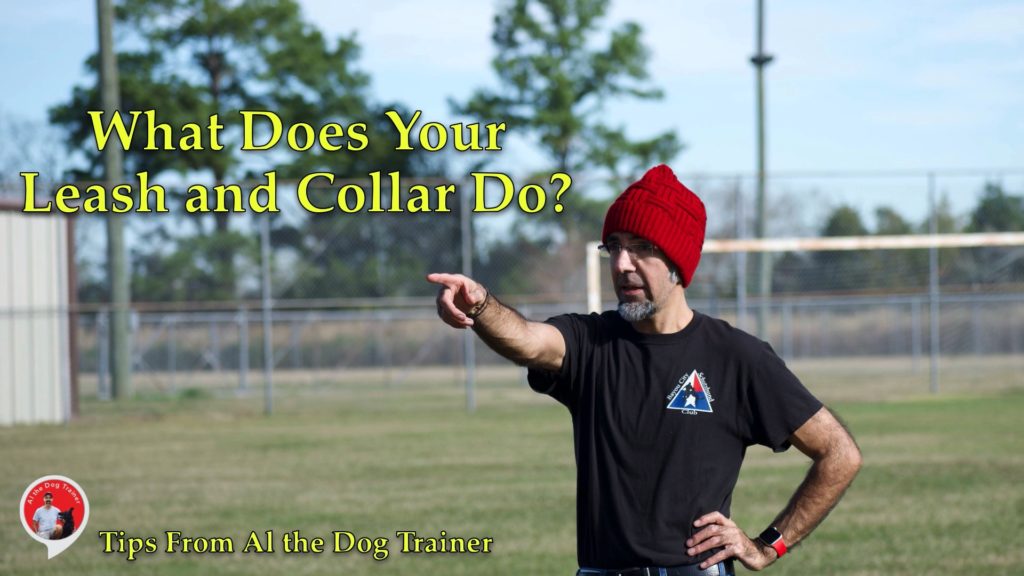
Today’s title is: What does your leash and collar do? So this will be a general explanation, and maybe with some specifics about how a leash and collar work.
Leashes
There are a lot of choices on leashes. So when I think about a leash, I think of it as a direct extension of my arm. Now, I’m kind of a tall guy, and I’m five foot eleven, but my arms are a little bit longer than most. I can’t always grab dogs with my hands, and that’s where the leash plays a role.
The leash is the direct extension of my arm, and as such, it can be a nice thing to get a long extension of the dog. I’ll tell you that routinely when I’m training pet dogs, you’ll see me most commonly on 4-5 foot leashes, as well as a 15-foot leash. When I’m training my competition sport dogs, you’ll see me more often than not using maybe a one-foot leash, potentially a five-foot leash. And then, I also have to use a 33-foot leash. They are all different, but the skill sets that you’re going to use with those are very similar.
I’ll tell you this, though, when you go from the skillset you’ll use for the 15-foot leash, and the 33-foot leash is very similar. But the 33-foot leash takes some skill to use particularly well because it’s just so much leash to have to manage.
Collars
The leash is an extension of your arm, and it directly connects to your dog’s collar, and the collar is genuinely the interface to your dog. Now, there are all sorts of collars that you can put on your dog’s neck. And, Yes, I’m aware that you can connect your leash to a harness and other things as well. But for the sake of simplicity, let’s talk about collars.
So there’s a lot of different collars out there. The next time that you’re with your dog look and see how wide the collar is. Because the width of the collar is going to determine a great deal of the nonverbal component that you’re trying to communicate to your dog, your collar is going to help the dog understand the pressure that you’re putting on them. If your collar is too wide, you might be too vague, and you could be promoting pulling. If your collar is too thin, then it might be too much information, and it might overwhelm your dog.
The thing to do is to find a size that works well for you and your specific dog. Don’t let anybody tell you that there’s one leash and one collar. One collar to use on your dog. Dogs are so different, and you need to find one that works well for you because that will serve you the best instead of using only one particular one.
Prong Collars
Let me give you an example. I routinely use prong collars to train dogs. Now I’m not advising you to buy a prong collar. I’ve been working with these things for 16, almost 17 years now, and I know quite a bit about them and how to use them. So they’re not for novices. But if you know what you’re doing, it’s a great tool.
There are generally three sizes of prong collars. Most people think of them in terms of small, medium, and large. Small for small dogs, medium for medium dogs, and large for large dogs. That’s not true, at least not entirely.
When I use one of these training collars, I look at how the dog is pulling on the leash, and then I try my best to match them to the prong collar that will not overwhelm them. But also help them to understand to stop pulling. So they come in a four-millimeter tip, a three-millimeter tip, and a two and a quarter millimeter tip. Yes, there are other options as well.
So you’re not going to just put the smallest one on the small dog. You have to kind of match it up to their temperament. The four-millimeter tip if you have a really powerful dog. That one will give you a lot of physical control. But let’s say that that particular dog is lunging quite a bit. The four-millimeter tip isn’t enough to create a behavior change where the dog will stop pulling. But the two and a quarter millimeter, which is a tiny tip, it’s very fine. That might be too much for that dog.
So you have to go through the process of doing that. And the same could be true for buckle collars, Martingales, slip leashes, choke chains, or for any of those other tools.
Now, I don’t use a choke chain. I don’t care for them because of what it does to the dog’s coat. I don’t think that they’re particularly effective. And so that’s another reason that I don’t use them. But if it works for a specific dog, then I wouldn’t be opposed. But I’m always looking for what’s the best tool. So think about that.
Look at your leash and think of it as an extension of your arm and use it in a way that helps you communicate to your dog what you want them to do. And then use your collar to lead your dog effectively and also to set boundaries.
I hope that was helpful for you. Remember, you can always visit my YouTube Channel for more tips like this, or find them right here on my website www.longoriahausdogtraining.com.
Happy Training!

